I like bugs, too
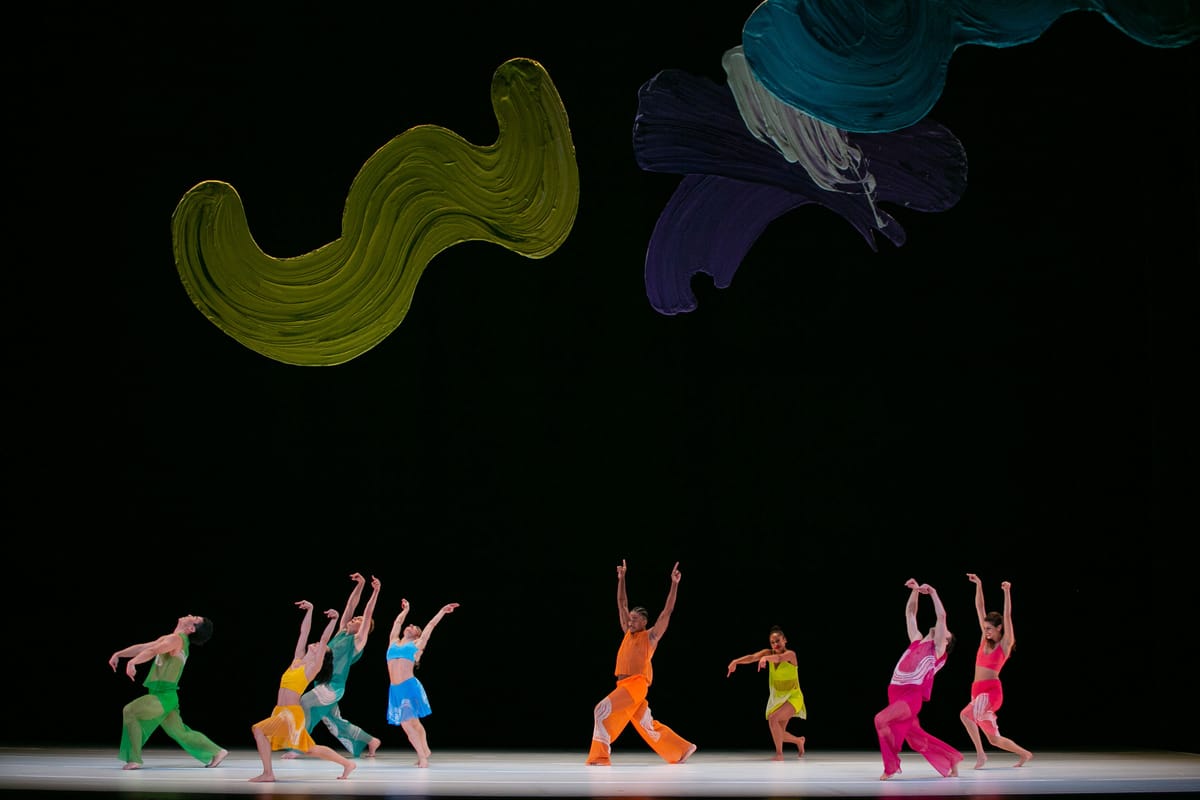
"Somewhere in the Middle", "Eventide", "Esplanade"
Paul Taylor Dance Company
David H. Koch Theater
Lincoln Center
New York, New York
November 12, 2023
“I love bugs!” Eran Bugge says Paul Taylor told her at her audition. The audience at her retirement certainly agreed as she and Christina Lynch Markham, the most senior members of the company, both retired at the end of the Lincoln Center season to cheers and flowers. Neither looked retirement age and they both flew through the slides, skids, and fearless jumps of “Esplanade” with a carefree and joyful abandon. Bugge had announced her retirement before the season opened, so the audience had had time to savor her dancing all season, but Markham’s retirement was a surprise, and she got especially heartfelt applause.
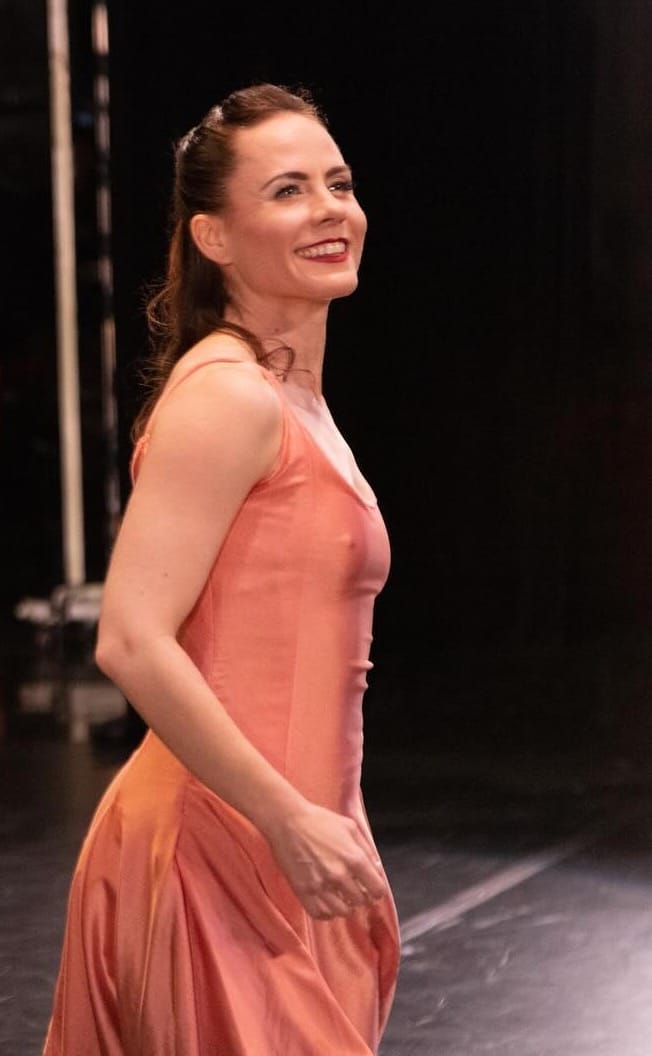
The evening opened with Amy Hall Garner’s 2022 “Somewhere in the Middle”, a rather obliquely titled bouncy, colorful work to jazzy big band recordings (unidentified) of Count Basie, Sarah Vaughan, Duke Ellington Winton Marsalis, and Bill Evans. The eight dancers in gum drop colored undies covered with chiffon (costumes by Mark Eric) jumped, ran, rolled, and shimmied in constant movement under equally colorful cutouts designed by Donald Martiny, with a pause for Maria Ambrose and Devon Louis to change into black for a bluesy I-want-to-leave-you-but-I-can’t pas de deux.
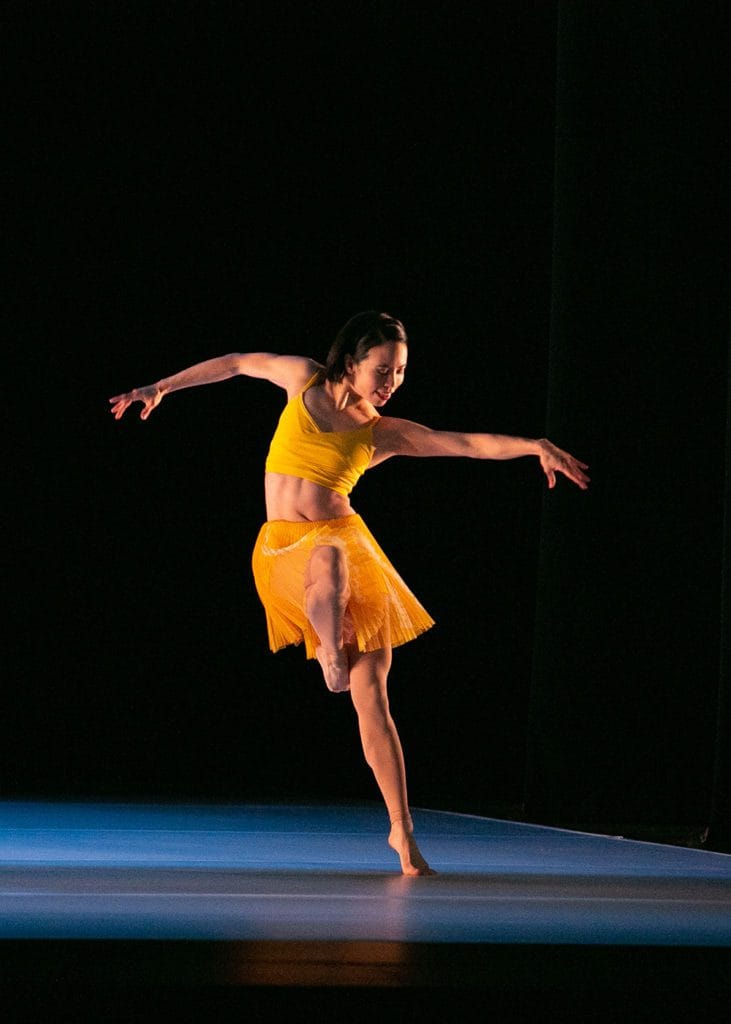
The dancers went full-out, alternating crisp, sharp moves with flowing arms and shimming hips, jumping up and falling down, but there was little variety or modulation, so there was no cumulative effect; for all its energy, it seemed directionless and a bit shapeless. The big-band music seemed much more sophisticated than the bright costumes and constant movement and the music just seemed like background noise. There was some fine dancing, of course, Madelyn Ho and Lisa Borres were both exceptionally clear, carving shapes in the air, and Jada Pearman’s solo had a wonderful impromptu feel (though she did have to tap her head as the lyrics crooned about lingering memories).
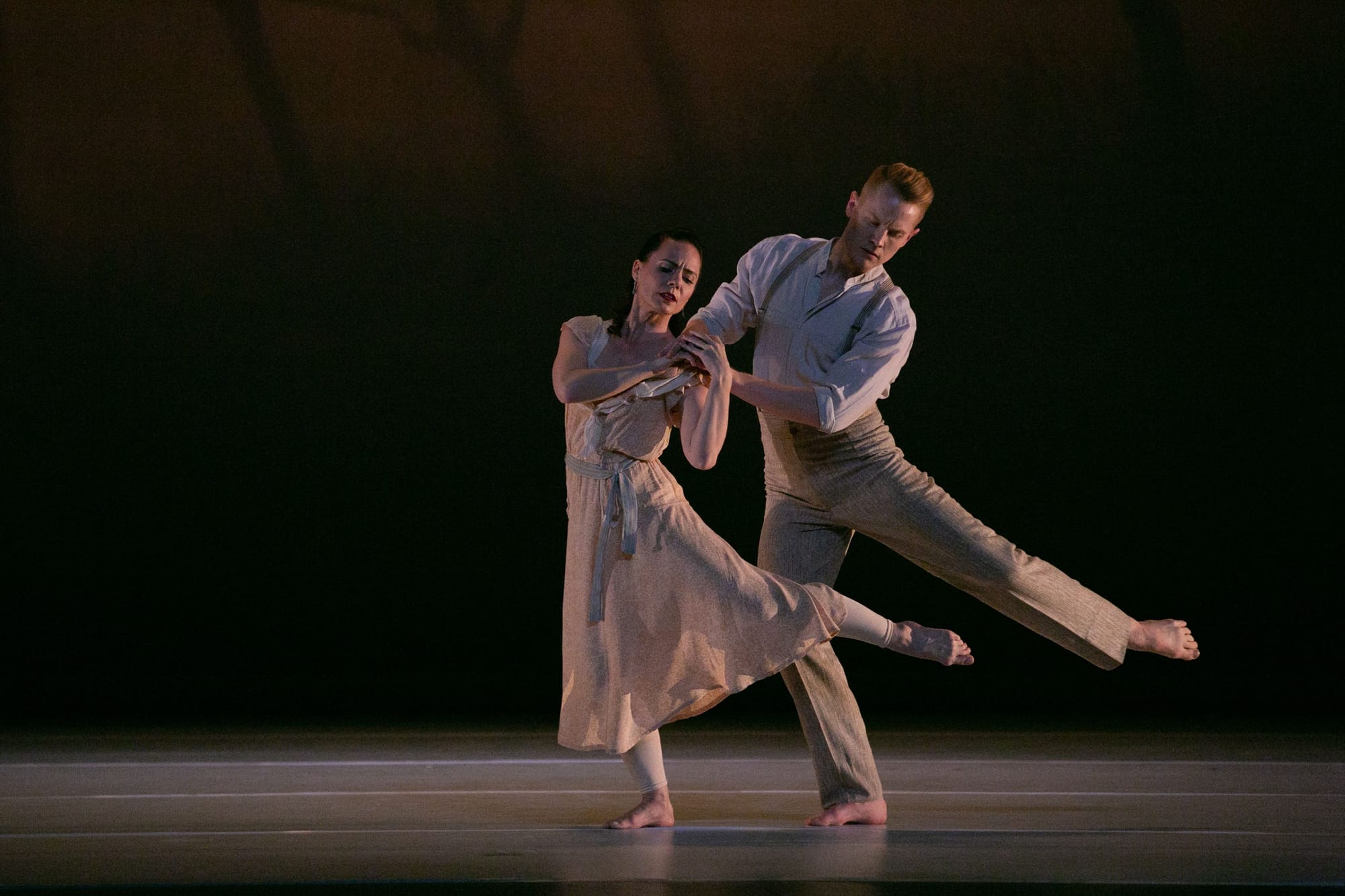
Paul Taylor’s sepia-tinted “Eventide” is all about memories, though Taylor had no need to resort to such literal gestures. Bugge, with Lee Duveneck, danced the central role, a debut for her and a part, she said in an interview, she has always wanted to dance. They were reticently radiant as the older, more mature couple, struggling with some hidden sorrow, trying to understand and support each other. Their two pas de deux, the first where he tried to comfort her and second where he was kneeling alone and she slowly approached him, were full of small, poignant gestures, a head turn, a hand on a shoulder, a slow walk together, that melded movement and meaning in the way the best silent films do, and both gave their dancing a weight and clarity that glowed.
The small, eloquent gestures were not limited to the main couple, and Kristin Draucker and Jake Vincent, though they did not get their own pas de deux, made the most of their brief conversation, as he gestured longingly to the distance and she tried to keep him near. There were happier couples in the group, and Pearman and Austin Kelly were an embodiment of sunny, youthful exuberance skipping through their happy solo. Borres, with Alex Clayton, was also fast and bouncy, but gave her dancing a bit of an edge, as if she were running after him; Lisa Viola, the originator, was a dynamo, and never subservient to anyone.
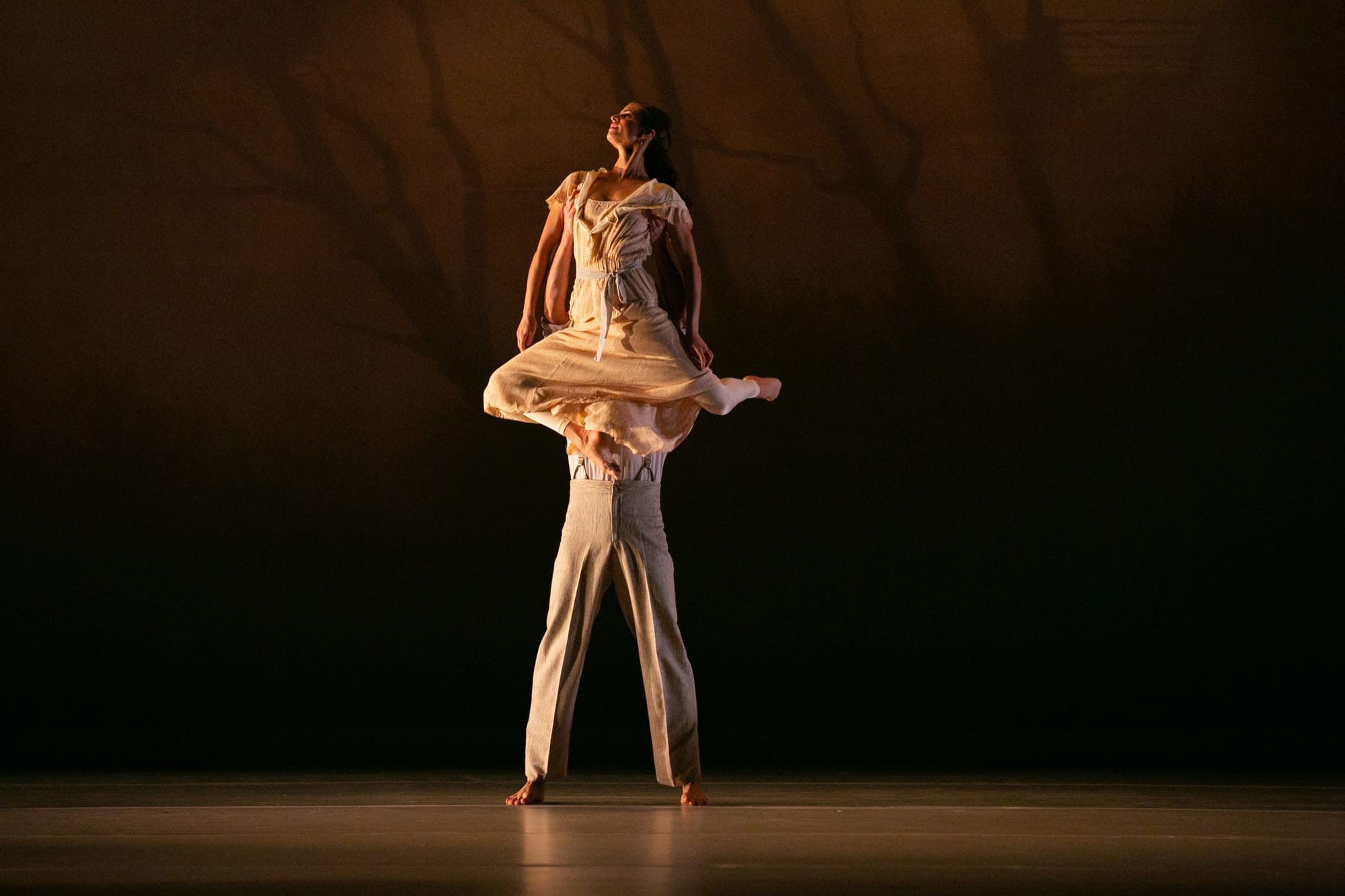
Maria Ambrose was subservient, trapped by desire, in her haunting little vignette where she ends sobbing alone. Kenny Corrigan, her partner, did not have enough swagger or callousness, though, to be completely convincing as the arrogant louse who abandoned her. The finale where the five couples, happy and sad, young and mature, returned as ghosts was magical, as they seemed to vanish in the mist, with one last moment to be together, then separating. The slightly formal, sweeping steps Taylor gave them avoids sentimentality, and the sombre graciousness of their leave taking is, for me, one of the most beautiful moments in the dance world.
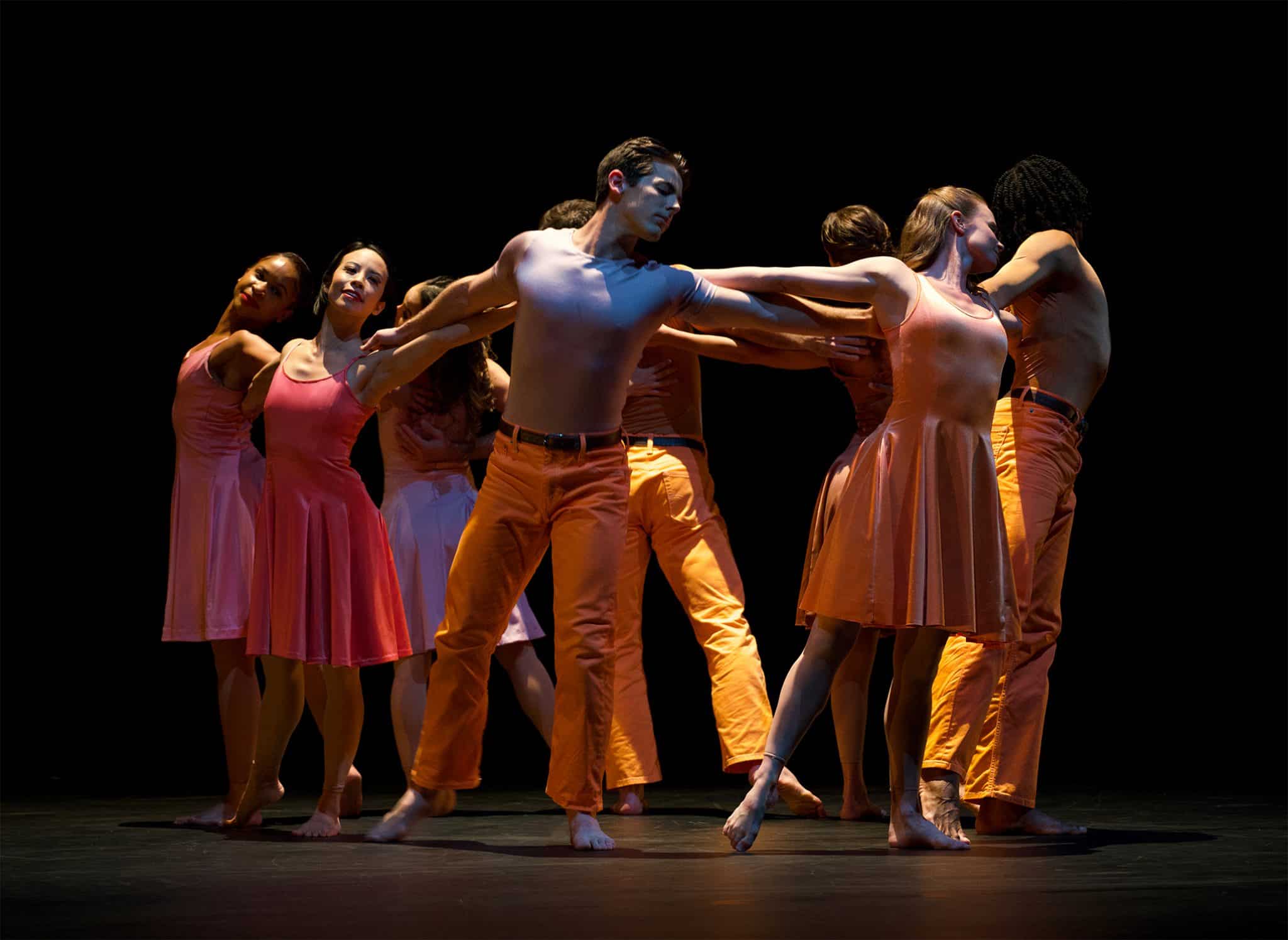
There are beautiful moments in “Esplanade”, Taylor’s 1975 hit to Bach, as well, and at this performance, the most beautiful one was the final scene, when, after the company entertained the audiene with a cacophony of slides and jumps bouncing off the floor, Bugge stood alone on stage, her arms wide, as if trying to embrace the atmosphere. The audience clearly embraced her back. Markham, too, got to enjoy a final “Esplanade” as her brief solo in the finale, where she hurled herself across the stage in a frenzy seemed to explode with the pure joy of movement.
If “Esplanade’s” finale were a lunchmeat, it would be called “impossible” since the movements are almost inhumanly difficult but it does have its quiet moments. The odd center section, where what may be a family (Ambrose and Louis as the parents and Pearman as the child) seem to go through some trauma with Bugge and Madelyn Ho as invisible observers, was especially intense, and poor Ambrose was left alone again, with invisible tears.
And for all its anarchic runs, (Ho, crouching low, was so fast and skittery that the audience laughed in surprise) “Esplanade” nods to Bach with its structure and its often formal, though shifting shapes. Its warm formality is both classical and personal, as it lets the dancers’ personalities gleam. Dances like the opening “Somewhere in the Middle” seem to be choreographed for impersonal dancing bodies, as the performers flow through difficult but generic shards of movement with legs and arms flying. Taylor choreographed for people who danced, and it is those people who the audience cherishes; may there be more bugs in the future.
copyright © 2023 by Mary Cargill



